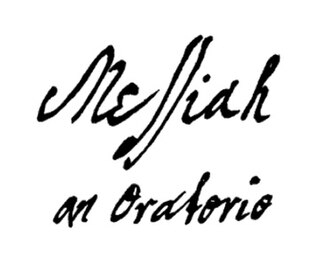
Messiah is an English-language oratorio composed in 1741 by George Frideric Handel. The text was compiled from the King James Bible and the Coverdale Psalter by Charles Jennens. It was first performed in Dublin on 13 April 1742 and received its London premiere a year later. After an initially modest public reception, the oratorio gained in popularity, eventually becoming one of the best-known and most frequently performed choral works in Western music.
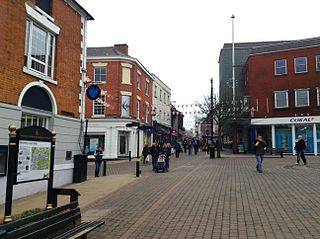
Hinckley and Bosworth is a local government district with borough status in Leicestershire, England. The council is based in Hinckley, the largest town. The borough also includes the town of Earl Shilton and numerous villages and surrounding rural areas. The Bosworth in the borough's name refers to the small market town of Market Bosworth, near which the Battle of Bosworth Field was fought in 1485.

Market Bosworth is a market town and civil parish in Leicestershire, England. At the 2001 Census, it had a population of 1,906, increasing to 2,097 at the 2011 census. It is most famously near to the site of the decisive final battle of the Wars of the Roses.

Carlton is a small rural parish located East of the river Sence in Leicestershire, England, around 2.2 miles North of Market Bosworth. According to the 2011 Census, Carlton has a population of 305 However, from 2014 it is estimated that there are around 330 people living there with a total of 283 registered electors. There are four roads in Carlton:

Sutton Cheney is a village and former civil parish, now in the parish of Dadlington and Sutton Cheney, in the borough of Hinckley and Bosworth, in the county of Leicestershire, England, near the county border with Warwickshire. In addition to the village of Sutton Cheney itself, the civil parish also contains the villages of Dadlington and Shenton, a number of farms, and the location of the Battle of Bosworth. Its closest large towns are Nuneaton and Hinckley. Its closest market town is Market Bosworth.

Measham is a large village in the North West Leicestershire district in Leicestershire, England, near the Derbyshire, Staffordshire and Warwickshire boundaries. It lies off the A42, 4+1⁄2 miles (7.2 km) south of Ashby de la Zouch, in the National Forest. Historically it was in an exclave of Derbyshire absorbed into Leicestershire in 1897. The name is thought to mean "homestead on the River Mease". The village was once part of Derbyshire before being transferred to Leicestershire.
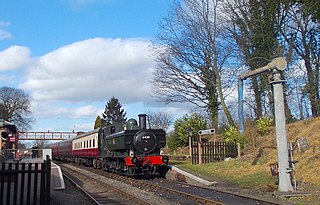
The Battlefield Line Railway is a heritage railway in Leicestershire, England. It runs from Shackerstone to Shenton, via Market Bosworth, which is a total of 5 miles (8.0 km). Shenton is near Bosworth Field; this is the location of the final battle of the Wars of the Roses, immortalised in Shakespeare's Richard III, giving the railway its name.
Snarestone is a small rural village in North West Leicestershire, England.

Nailstone is a village and civil parish in the Hinckley and Bosworth district of Leicestershire, England, situated to the west of Leicester and 3 miles (5 km) north-east of Market Bosworth. According to the 2001 census the parish had a population of 521, reducing slightly to 514 at the 2011 census. The village has a primary school: Dove Bank Primary School the catchment area for which also includes the neighbouring village of Bagworth. The village also has a pub: The Bull's Head

Shackerstone is a village and civil parish in the Hinckley and Bosworth district of Leicestershire, England. It is situated on the Ashby-de-la-Zouch Canal and the River Sence. According to the 2001 census the parish, which also includes the village of Barton in the Beans, had a population of 811, including Odstone which had risen to 921 at the 2011 census.
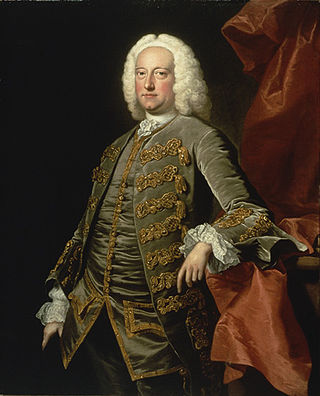
Charles Jennens was an English landowner and patron of the arts. As a friend of Handel, he helped author the libretti of several of his oratorios, most notably Messiah.
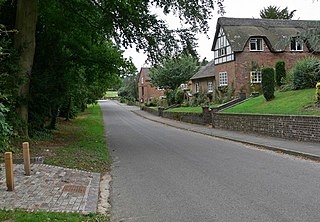
Shenton is a village and former civil parish, now in the parish of Dadlington and Sutton Cheney, in the Hinckley and Bosworth district, in the county of Leicestershire, England, situated 2.20 miles (3.54 km) south-west of Market Bosworth. Shenton was formerly a chapelry and township of the parish of Market Bosworth. The settlement is almost entirely agricultural, containing several farms. Much of the land has been in the same family since William Wollaston purchased the manor in 1625. It is essentially a privately owned estate village and has seen comparatively little modern development. It has been designated a conservation area. The settlement lies either side of the Sence Brook, which is crossed by a picturesque Victorian bridge. The area is fairly flat, and subject to flooding. In 1931 the parish had a population of 154.
The Charnwood Forest Railway was a branch line in Leicestershire constructed by the Charnwood Forest Company between 1881 and 1883. The branch line ran from Coalville to the town of Loughborough.

The River Sence is a river which flows in Leicestershire, England. The tributaries of the Sence, including the Saint and Tweed, fan out over much of western Leicestershire from Charnwood Forest and Coalville in the north-east to Hinckley and almost to Watling Street in the south and south-west. Its watershed almost coincides with Hinckley and Bosworth Borough of Leicestershire, which was formed in 1974 by amalgamation of Market Bosworth Rural District and Hinckley Urban District. It flows into the Anker, which in turn flows into the River Tame. It is part of the wider River Trent catchment, which covers much of central England. In 1881, Sebastian Evans wrote that the usual names for this river were Shenton Brook and Sibson Brook.
Shackerstone railway station is a preserved railway station and heritage museum in Leicestershire, Central England. It is the terminus and the headquarters of the heritage Battlefield Line Railway, with the Shackerstone Railwayana Museum, tea room, shop, loco shed and main rolling stock located here.

Congerstone is a village and former civil parish, now in the parish of Shackerstone, in the Hinckley and Bosworth district, in Leicestershire, England. It is three miles north west of Market Bosworth, of which it was historically a daughter parish. It is near the Ashby-de-la-Zouch Canal and the A444 road. In 1931 the parish had a population of 209.

Nathaniel Curzon, 1st Baron Scarsdale of Kedleston Hall, Derbyshire was an English Tory politician and peer.

Norton Juxta Twycross, usually known as simply "Norton"(or "Norton-Juxta"), is a village and former civil parish, now in the parish of Twycross, in the Hinckley and Bosworth district, in the county of Leicestershire, England. The village is part of the church parish of Appleby Magna, with the vicar based in Appleby. In 1931 the parish had a population of 249.
Richard Hayward (1725–1800) was an 18th-century British sculptor. He has several works in Westminster Abbey.
























